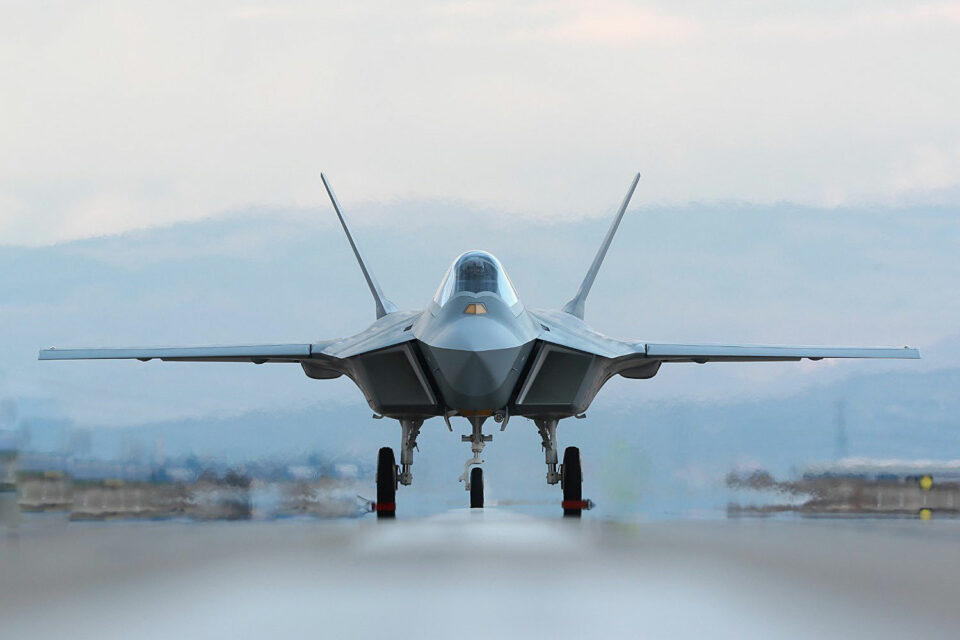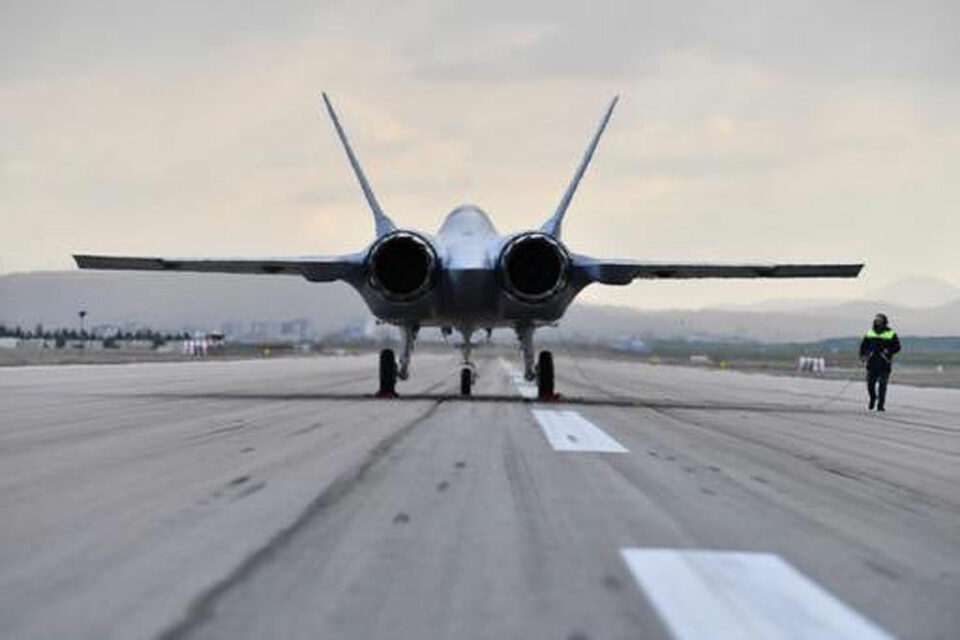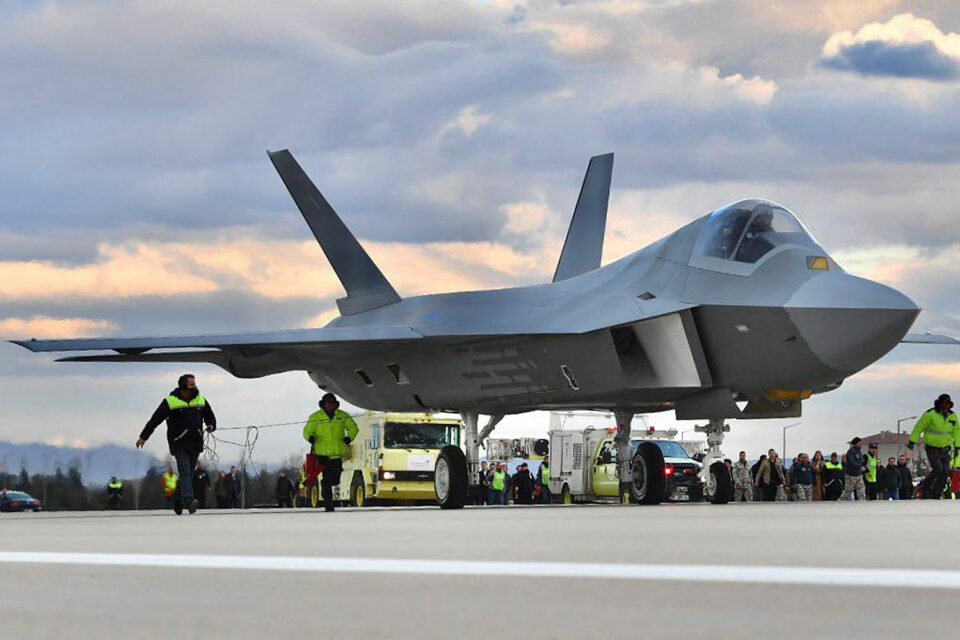The Turkish government’s ambitious TF-X program reached yet another milestone by carrying out the first taxi tests of the unprecedented stealth fighter developed by the country. The combat aircraft is expected to be officially unveiled in the coming days by Turkish Aerospace Industries (TAI).
The first TF-X prototype bears many similarities to the F-22 Raptor, although it is smaller. However, the images released by the Turkish defense industry agency reveal a misshapen-looking fighter, with a bulky and elevated cockpit, in addition to the fuselage and moving surfaces of straight lines, as if only a draft of the project.
Despite this, the TF-X has some characteristics that suggest that it is a combat aircraft with great potential. Equipped with two engines of unknown origin (there are similarities with the F110 turbofan), the fighter has air intake ducts that hide the first fan stage, unlike the F-35.

Another detail that draws attention is a front sensor above the nose, which may contain an IRST (Infrared Search and Tracking Sensor) equipment. There is also another ledge at the bottom that would include an EOTS (Electro-Optical Acquisition System) detection system.
F-16V fighters
The TF-X has been under development for about a decade by the Turkish government, which wants to establish great independence from foreign suppliers. The country, located in Europe and Asia, has maintained unpredictable relations with the West, its neighbors in the Middle East and the nuclear powers Russia and China.

Originally, the country’s Air Force should have received F-35 fighters, but the purchase of Russian surface-to-air missiles S-400 prompted former US President Donald Trump to withdraw Turkey from the Joint Strike Fighter program.
At the same time that it sells Baykar drones to Ukraine, Turkey has also been an interlocutor for the Russians. The country’s president, Tayyip Erdogan, has a direct channel with Vladimir Putin. No wonder there are rumors that Russia can supply the TF-X engines until a local turbofan is developed.
Follow ADN: Instagram | Twitter | Facebook
In parallel, the current American president, Joe Biden, is pressuring Congress to authorize the sale of a batch of F-16V fighters in an attempt to keep Turkey closer to the West. The Air Force really needs reinforcement as the TF-X is not expected to enter service before 2030.


